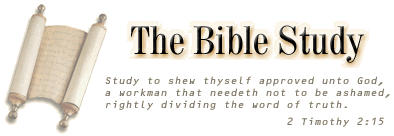 |
Rejecting
the Mormon Claim
Part 9A
Archaeology and the Book of Mormon
The Book of Mormon claims to be an historical record of peoples who inhabited the New World from about 600 BC to about 400 AD (plus an earlier group known as the Jaredites, but their supposed location is not pressed by Mormons). For this thousand-year period, the millions of these
Book of Mormon peoples supposedly lived somewhere in the New World. Where? And specifically, where are the archaeological remains that these people left behind? I intend to deal with these issues in these next two postings to E-D.
For a long time the Mormons have assumed that the Book of Mormon lands encompassed all of North and South America, although today most Mormons believe in variations of what they call the "limited geography" theory. I will explain these two major models, along with variations in the second one.
The first major model is the "hemispheric" model. It supposes that when Lehi and his family landed in the New World (perhaps near modern-day Chile), they came to two empty continents. The
Book of Mormon peoples then lived and populated North and South America, and became the ancestors of all the native Americans on both continents. If this is true, then the
Book of Mormon peoples battled to near-extinction near Palmyra, New York, in about 400 AD, and all native Americans are thus the descendants of the small handful of survivors of this epic battle only 1600 years ago.
In Joseph Smith's time, such a scenario may have seemed reasonable, but the problems here are too numerous to mention. Besides the obvious question of how so many tribes could have descended from so many people so quickly, there is also the language question. There are so many language stocks and dialects among the various native American tribes that they could not possibly have developed so quickly, unless perhaps there was a second Tower of Babel but no Mormons have ever proposed such an event.
Because of the numerous problems with this "hemispheric" theory, most Mormons today believe that the
Book of Mormon lands encompass an area of no more than about 400 miles by 200 miles, and must be somewhere in the tropics. This, however, creates other problems, and is one reason for the variations in this theory, which I will get to in a minute.
If millions of people lived in that size area for a thousand years, where are the archaeological remains of their presence? The Mayas occupied and controlled the region of Central America during the supposed
Book of Mormon time period, and there is no indication whatsoever that they interacted with a Jewish/Christian people in their midst for a thousand years. So are the Mayas the
Book of Mormon people? This is not even remotely possible.
The variations exist precisely because there is no archaeological data that ties the
Book of Mormon to actual real-world sites. Most variations are described by the identity proposed for the "narrow neck of land" that is essentially the geographic center of
Book of Mormon events. The leading candidate for this "narrow neck" is the Isthmus of Tehuantepec, although other candidates include the Isthmus of Panama, a coastal corridor along the Pacific coast of Chiapas in southeastern Mexico, a southern part of the peninsula of Yucatan, the strip of land at Laguna de Terminos in the southwest part of the Yucatan peninsula, the isthmus from southeast Yucatan at Lago de Isabal southwest to the Pacific, the Bay of Honduras, the strip of land between Golfo Dulce and the Bay of Honduras, Costa Rica, and the Golfo de Guayaquil in Ecuador.
As I said, the leading theory is that the Book of Mormon lands are centered around the Isthmus of Tehuantepec, but the biggest problem with this theory is with the directions
involved, with everything being skewed about 60 degrees counter-clockwise. The "land northward" would therefore actually be WNW of the "narrow neck", according to this theory, and the "west sea" due south. The "land southward", the "east sea", the "sea north", and the "sea south" are likewise skewed. The explanations for getting around this problem are outrageous.
One of the leading Mormon scholars on the issue of archaeology and the Book of Mormon
is Professor John Sorenson of Brigham Young University. In 1992 he authored an exhaustive study of the entire history of
Book of Mormon archaeology, along with an exhaustive look at the "internal model" presented by the
Book of Mormon. (In other words, what can be deduced about Book of Mormon
sites and lands from the Book of Mormon itself, even apart from trying to fit it into the real world.) Let me quote his own conclusion: "...the upshot is that the existing literature goes in so many directions that no solution stands out as sufficiently persuasive to rally consensus behind it.....There is no indication that by simply waiting for more books or papers to appear somehow consensus will emerge. Without major changes in approach, nothing like that promises to come about."
The bottom line is this: the Book of Mormon claims to be the historical record of millions of people who lived in a sizable area in the Americas for a thousand years. But there is no evidence of their existence, and because of this Mormons have a variety of suggested answers but none of these have universal support. This lack of archaeological evidence to back up even the existence of these millions of people, to say nothing of contradictory archaeological evidence, demonstrates that the
Book of Mormon is not an actual historic record. It is instead the product of Joseph Smith's imagination.
Dean Brown
Avon, Indiana, USA

|
|
